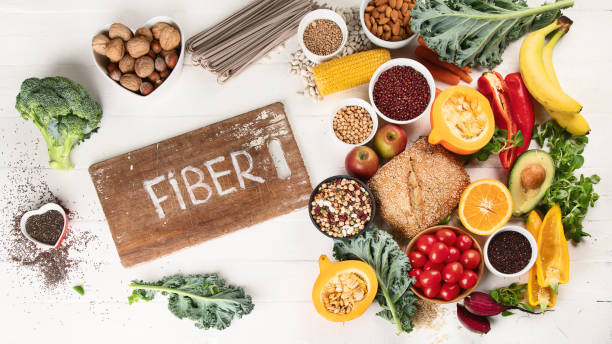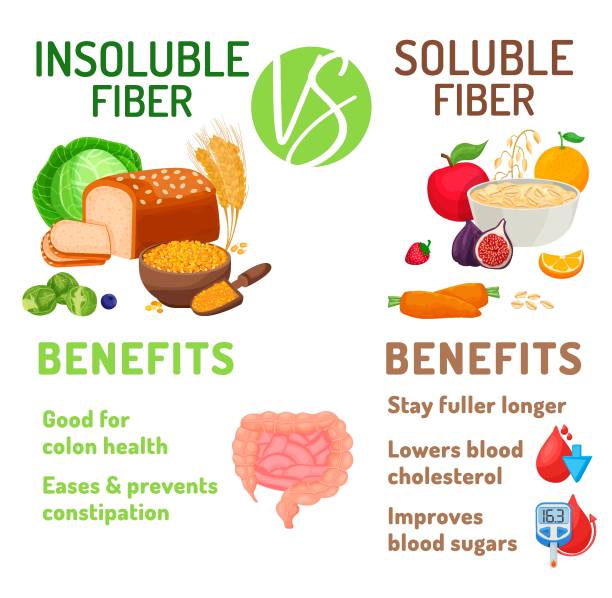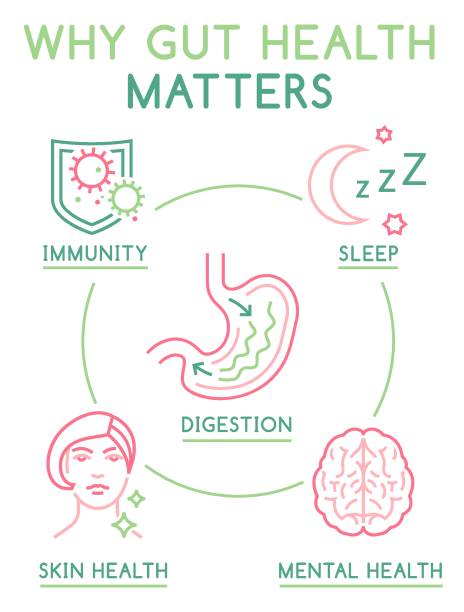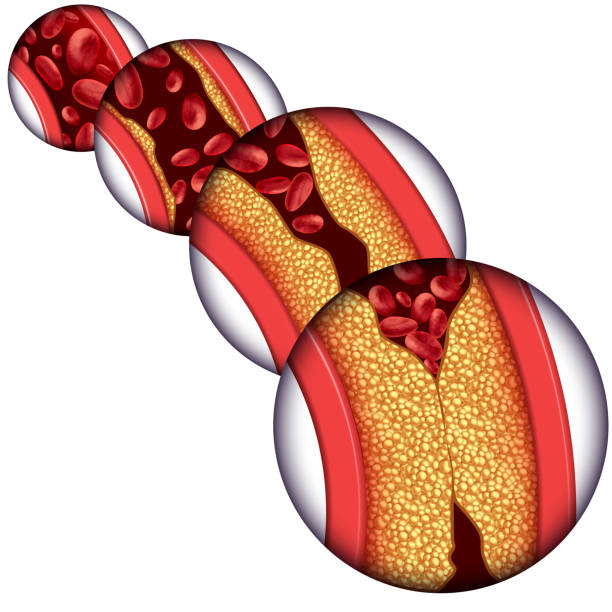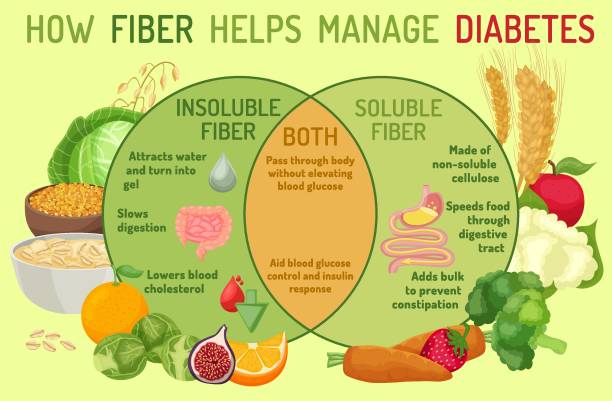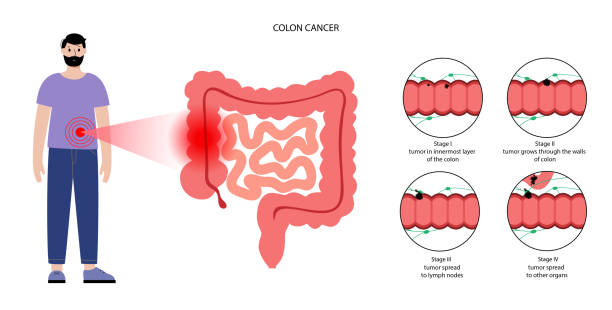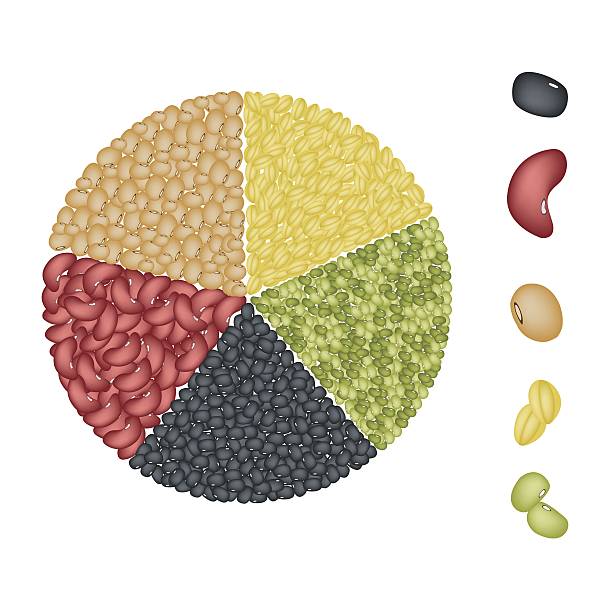Welcome to Fitness Deciphers…!!!
Are you looking for fiber-rich Indian foods?
Don’t worry.
Here I will provide a complete list of Indian foods rich in fiber. These foods can easily fulfill your daily requirement for fiber.
Before we start our discussion about Indian foods rich in fiber let me ask you one question.
Have you ever visited your doctor with the problem of constipation?
If your answer is yes then you might be lacking a sufficient amount of fiber in your body.
And you were probably given fiber supplements or any laxative to consume.
And that is why we are often told to avoid consuming refined wheat flour because it contains zero fiber, making it very difficult to digest.
So it is clear that fiber is important for the body.
In fact, fiber is one of the most important nutrients that our bodies need compulsory.
In this article, we will discuss a little bit about fiber, its type, and its benefits, and then we will discuss authentic Indian foods that are extremely rich in dietary fiber.
Table of Contents
1. What is dietary fiber?
Many health and fitness websites use technical words to describe dietary fiber.
I will keep it simple.
Dietary fiber is a type of carbohydrate that helps your body keep your digestive systems healthy.
It is part of plant-based foods such as vegetables, fruits, grains, etc which can’t be digested and absorbed by our bodies.
It is basically the part of cells of the walls of the plants.
Though our bodies can’t digest or absorb dietary fiber, it is extremely beneficial for our health.
Do you know?
The word dietary fiber was coined by Hipsley in 1953 to describe the indigestible constituents from which the plant cell wall is made.
2. Types of Dietary Fiber
According to their water solubility, dietary fiber is classified into two categories.
- Soluble Dietary Fiber (SDF)
- Insoluble Dietary Fiber (IDF)
1) Soluble Dietary Fiber (SDF)
Soluble fiber helps to slow the emptying process in our stomachs, which prevents us from feeling hungry often.
It dissolves in water and forms a gel-like substance as it passes through your digestive system.
It also helps to lower cholesterol and stabilize your blood glucose levels by preventing your body from absorbing excessive sugar and starch.
Cellulose and Lignin are examples of soluble dietary fiber.
Soluble dietary fiber is generally found in vegetables, fruits, barley, and legumes.
2) Insoluble Dietary Fiber (IDF)
IDF helps to soften the contents of our bowels and keeps the bowel movement regular by absorbing the water.
Insoluble Dietary Fiber is found in wheat bran. So eating whole wheat bread will provide you IDF. It is also found in the skin of fruits and vegetables.
Cellulose is one example of insoluble dietary fiber.
The below image shows the difference between soluble and insoluble dietary fiber.
3. The Health Benefits of Dietary fiber
It is very important to know the benefits of dietary fiber.
It is because if you don’t know it then how can you start eating Indian foods rich in fiber?
1) Gut Motility and prevention of constipation
Among all the benefits of dietary fiber we know, these are the world-famous benefits of dietary fiber.
Many studies show that when dietary fiber is given to patients with chronic constipation, they successfully got rid of it.
Dietary fiber makes bowel movements easy and keeps the bowel environment healthy.
If we consume it in a sufficient amount we can easily reduce the symptoms of constipation such as hardness of stool, defecation frequency, straining to defecate, etc.
Read The Complete Ayurvedic Guide to Prevent Digestion Problems Forever HERE
Dietary fiber increases the weight and size of the stool as the bulky stool is easier to pass.
It also solidifies the watery stool because it absorbs excess water and prevents the risk of constipation.
The latest reports also confirm the consumption of dietary fiber as an effective strategy to prevent and cure constipation.
2) Helps to keep body weight normal
Dietary fiber promotes weight loss by lowering the frequency of eating and lowering the consumption of food.
It is because dietary fiber makes you feel fuller for a longer period.
However, the studies show that the effects of dietary fiber on body weight are short-term, and very few studies are available on the long-term effects of dietary fiber on body weight.
High fiber foods are also called “low energy-dense” foods because they have a low caloric amount as compared to the same volume of low fiber food.
That’s why we are recommended to eat more fruits and other fiber-rich foods during dieting.
3) Gives relief to diarrhea
You may find it to be strange but it is true.
Dietary fiber can give relief to moderate diarrhea because soluble fiber can absorb the excess water in the digestive tract and makes the stool firmer and slower to pass.
4) Lowers the cholesterol levels
Soluble fiber lowers the low-density lipoprotein also called bad cholesterol which results in lowering cholesterol levels.
It is one of the most praised health benefits of consuming fiber-rich foods. As lots of people in this world are suffering from the bad cholesterol problem.
5) Increases insulin sensitivity and prevents type 2 diabetes
Lots of studies show a positive relation between fiber intake and insulin sensitivity. Type 2 diabetes has increased very much over the past several years.
It is due to reduced insulin sensitivity. As dietary fiber can increase insulin sensitivity, it can also prevent type 2 diabetes.
One study shows that people who took dietary fiber were found to have 25% more insulin sensitivity.
6) Lowers the Risk of Cardiovascular Diseases (CVD)
Cardiovascular diseases such as coronary heart disease (CHD), stroke, and hypertension affect more than 80 million people and are the leading causes of mortality in the USA.
A higher intake of fiber-rich food can significantly decrease the risk of CVD.
It is because the major causes of these cardiovascular diseases are higher cholesterol levels, obesity, diabetes, hypertension, etc.
Dietary fiber helps in all the causes.
That’s why the consumption of whole-grain foods has increased worldwide.
People who intake adequate amounts of fiber are 29% less prone to Coronary Heart Disease (CHD) which is the leading cause of death.
7) Improves immunity
Dietary fibers such as inulin and other oligofructoses tend to stimulate the growth of bifidobacteria in the colon.
These bacteria generate short-chain fatty acids (SCFA) and stimulate the immune system.
It is because dietary fiber is not digested by pancreatic enzymes.
So it (inulin) enters the colon where it gets completely converted into SCFA by the micro bacteria and it promotes the growth of bifidobacteria.
8) Prevents colon cancer
In the USA, colon cancer is one of the top 3 forms of cancer.
Many studies show that higher consumption of dietary fiber provides a strong shield against colon and rectal cancers.
The below image shows colon cancer.
9) Increases mineral bioavailability
Some highly fermentable fibers promote the absorption of minerals such as calcium, magnesium, and iron in the colon.
These fibers get fermented in the colon by colonic microbiota and produce SCFA which enhances the mineral absorption in the colon.
4. The Indian Foods Rich in Fiber
Now we will discuss Indian foods rich in fiber.
1) Whole grains
Whole grains are extremely praised and largely consumed in India. They are one of the best Indian foods rich in fiber.
One cup of whole wheat contains 8 to 8.2 gms of dietary fiber.
One cup of oats can give you 4 gms of fiber.
One cup of brown rice contains 3.2 gms of fiber. I only prefer eating semi-brown rice and not brown rice.
So avoid consuming white rice and start consuming semi-brown rice.
One cup of barley can also give you 6 gms of fiber. Whole wheat bread available in the Indian market contains 1.9 gm of fiber per slice.
Avoid eating white bread and try to consume whole wheat bread to ensure the optimal levels of dietary fiber in your body.
If you are fond of eating pasta then always consider the whole wheat pasta.
Some of you will start eating whole wheat after knowing the amount of fiber it contains. But don’t overconsume it.
You can also eat semi-brown rice or oats. Don’t consume ready-to-eat masala oats as they are fully loaded with artificial additives.
In fact, it can harm you instead of benefit you. Consuming milk and oats in breakfast is a good practice to ensure optimal fiber levels in your body.
( Extra tip: Add raisins and flax seeds in your milk-oat breakfast as it will increase the amount of dietary fiber in breakfast)
In short the whole grains such as
- Whole wheat
- Oats
- Semi-brown rice
- Barley
are full of fibers and they must be included in your diet on daily basis.
2) Indian fruits rich in fiber
Here I will mention the list of fruits that are available in the Indian market whose origin may or may not be from India.
No matter whether the fruits are dried or raw, they are always beneficial to our health.
The foods shown below are not only rich in fiber but also loaded with essential vitamins and minerals.
These fruits are below.
- Pear
- Red apple with skin
- Banana
- Orange
- Strawberries
- Peaches
- Grapefruit
- Watermelon
One medium-sized apple contains 4 gms of fiber. The same size of pear contains 5.5 gms of fiber. One cup of strawberries contains 3 gms of fiber.
One medium-sized banana and orange contains 3.1 gms of dietary fiber.
Foods like avocados, blueberries, and raspberries are also highly rich in fiber.
One cup of avocado contains 10 gms of fiber. But these foods are rarely seen in the Indian local markets.
Guava and mango are also rich in fiber.
Here I want to mention one thing that many people prefer drinking juices rather than eating fruits. It is a wrong practice.
If you are doing the same then you are missing so much fiber from the fruits. It is because fiber is extracted out as waste while making a fruit juice.
So always eat whole fruits than drinking their juice.
Also, you should not eat fruits while taking your meal. Don’t mix fruits and meals. You can eat fruits 45 minutes before or after having the meal.
3) Indian vegetables rich in fiber
In the further discussion of the Indian foods rich in fiber, now we will discuss the vegetables that are highly rich in dietary fiber.
As an agrarian economy, India is home to many types of vegetables.
Below is the list of Indian vegetables rich in fiber
- Sweet potato
- Spinach
- Corn
- Carrots
- Green beans
- Broccoli
- Cucumber
- Eggplant
- Cabbage
One medium-sized sweet potato contains 5.9 gms of fiber. One cup of spinach provides 7 gms of fiber. One cup of cooked carrots contains 4.7 gms of fiber.
One cup of corn can provide you with 3.6 grams of fiber.
One cup of cooked broccoli contains 5.1 gms of fiber. One cup of cooked green peas is loaded with 14 gms of fiber.
Cabbage is also one of the most praised sources of insoluble fiber.
4) Indian Beans rich in fiber
Let’s move to know the beans that are highly rich in fiber and easily available in the Indian markets. These beans are largely consumed in almost every Indian household.
The list of fiber-rich beans is following
- Black beans
- Soya beans
- Lima beans
- Kidney beans
- Black-eyed beans
One cup of black beans contains 15 gms of dietary fiber. Whereas one cup of kidney beans contains 13 gms of fiber.
One cup of roasted soya beans can provide you with 30 gms of dietary fiber.
One cup of lima beans can provide you with 13 gms of fiber.
Including such Indian foods rich in fiber in your regular diet can easily increase your fiber levels.
5) Nuts, seeds, and dry fruits rich in fiber
Nuts, seeds, and dry fruits are always praised when it comes to diet. They are not only loaded with fiber but also provide essential minerals and vitamins.
The list is given below.
- Almonds
- Pistachio nuts
- Peanuts
- Dried figs
- Raisins
- Dates
- Flax seeds
- Chia seeds
1/4 cup of almonds contains 4.5 grams of fiber and 1/4 cup of pistachio nuts contains 3.2 grams of fiber.
1/2 cup of figs contains 7.3 grams of fiber and 1/2 cup of dates contains 5.7 grams of fiber.
1/2 cups of raisins contain 5.6 grams of dietary fiber.
1 cup of peanuts provides 12.4 grams of fiber.
Cashews are medium-riched in fiber. Approximately 18 cashews provide 0.9 grams of dietary fiber.
Also, you should avoid eating peanuts if your sole goal is to get fiber. It is because peanuts are high in calories too.
Seeds like chia seeds and flax seeds are highly rich in fiber. 1 tablespoon of flax seeds contains 2.8 grams of fiber whereas 1 tablespoon of chia seeds is loaded with 4.9 grams of fiber.
In India, there is a tradition of eating a mixture of various seeds as mouthpieces (Mukhavaas). You can also adopt this tradition that has numerous health benefits.
Here we have discussed the most authentic Indian foods rich in fiber.
Now we will discuss the other tips to increase the fiber intake
5. Other Tips to increase Fiber intake
- Start the day with high-fiber breakfast cereal.
- Mix yogurt with high-fiber breakfast cereal, fruit, flax seeds, or chia seeds to meet half of your daily fiber requirement in just one meal.
- Use whole-grain bread and pasta instead of those made up of white flour.
- Add beans, lentils, or peas to soups and salads.
- As fiber acts as a sponge that absorbs lots of water, keep yourself hydrated. Drink at least 8 full glasses of water in a day.
- Boost the fiber content of soups and salads by cooking and adding whole grains such as whole wheat, barley, buckwheat, bulgur, corn, amaranth, brown rice, etc.
- Whatever food item you purchase always check the amounts of fiber in it.
6. How much fiber do you need?
After discussing what foods you should consume to increase fiber levels, we will discuss how much amount of fiber we need daily.
According to Healthline, women under 50 years should target to get 21-25 grams of fiber daily, and men under 50 years of age should target 31-38 grams of fiber per day.
Children between 1-18 years of age should target to get 14-31 grams of fiber a day.
The consumption of fiber of more than 70 grams a day can cause negative effects.
7. Negative effects of excess fiber consumption
- Excess fiber can bind minerals such as calcium, magnesium, iron, and zinc, which can limit the absorption of these essential micronutrients.
- Excess consumption of fiber and not drinking enough fluid can also cause intestinal blockage.
8. How to find that you are consuming excess fiber?
Your body gives your several signs if you are intaking excess fiber. The signs are following.
- Gastrointestinal distress such as bloating, gas, constipation, diarrhea, etc.
- Decrement in appetite or early satiety.
- Due to excess intake of fiber, you are not able to intake more food which results in low energy.
9. What to do when you find you are intaking higher fiber?
Here are some steps to consider
- First of all, look at your diet. Avoid any food that contains too much fiber.
- Avoid eating raw foods and start consuming cooked foods.
- If you have started any fiber supplements then increase their intake slowly.
Always remember,
” Just because something is good, doesn’t always mean that more is better”
Conclusion
Here we have discussed Indian foods high in fiber.
We also discussed the benefits of dietary fiber, how much amounts of it we need daily, and how & why to avoid its excess consumption.
Let’s go through a quick summary of this article.
Indian foods rich in fiber are below:-
1) Whole grains
- Whole wheat
- Whole wheat bread
- Semi-brown rice
- Oats
- Whole wheat pasta
2) Fruits
- Pear
- Red apple with skin
- Banana
- Orange
- Strawberries
- Peaches
- Grapefruit
- Watermelon
3) Vegetables
- Sweet potato
- Spinach
- Corn
- Carrots
- Green beans
- Broccoli
- Cucumber
- Eggplant
- Cabbage
4) Beans
- Black beans
- Soya beans
- Lima beans
- Kidney beans
- Black-eyed beans
5) Nuts, seeds, and dry fruits
- Almonds
- Pistachio nuts
- Peanuts
- Dried figs
- Raisins
- Dates
- Flax seeds
- Chia seeds
These foods are the best examples of fiber-rich Indian foods. If you consume them regularly in your diet then you will surely be able to increase your fiber intake.
If you have any questions related to Indian foods rich in fiber, you can ask me in the comment box.
If you like this article, share it with your friends.
Thanks for reading…!!!
